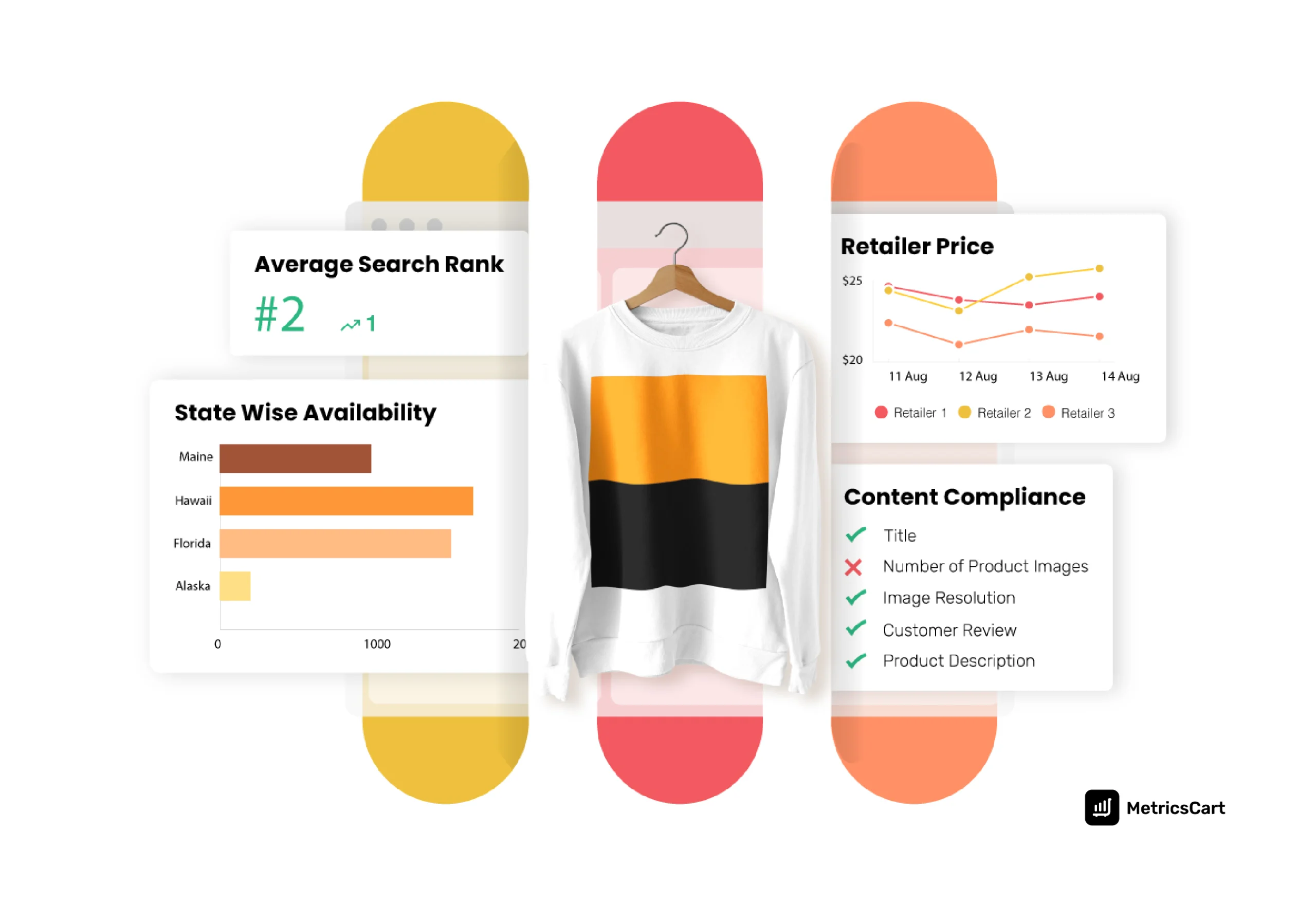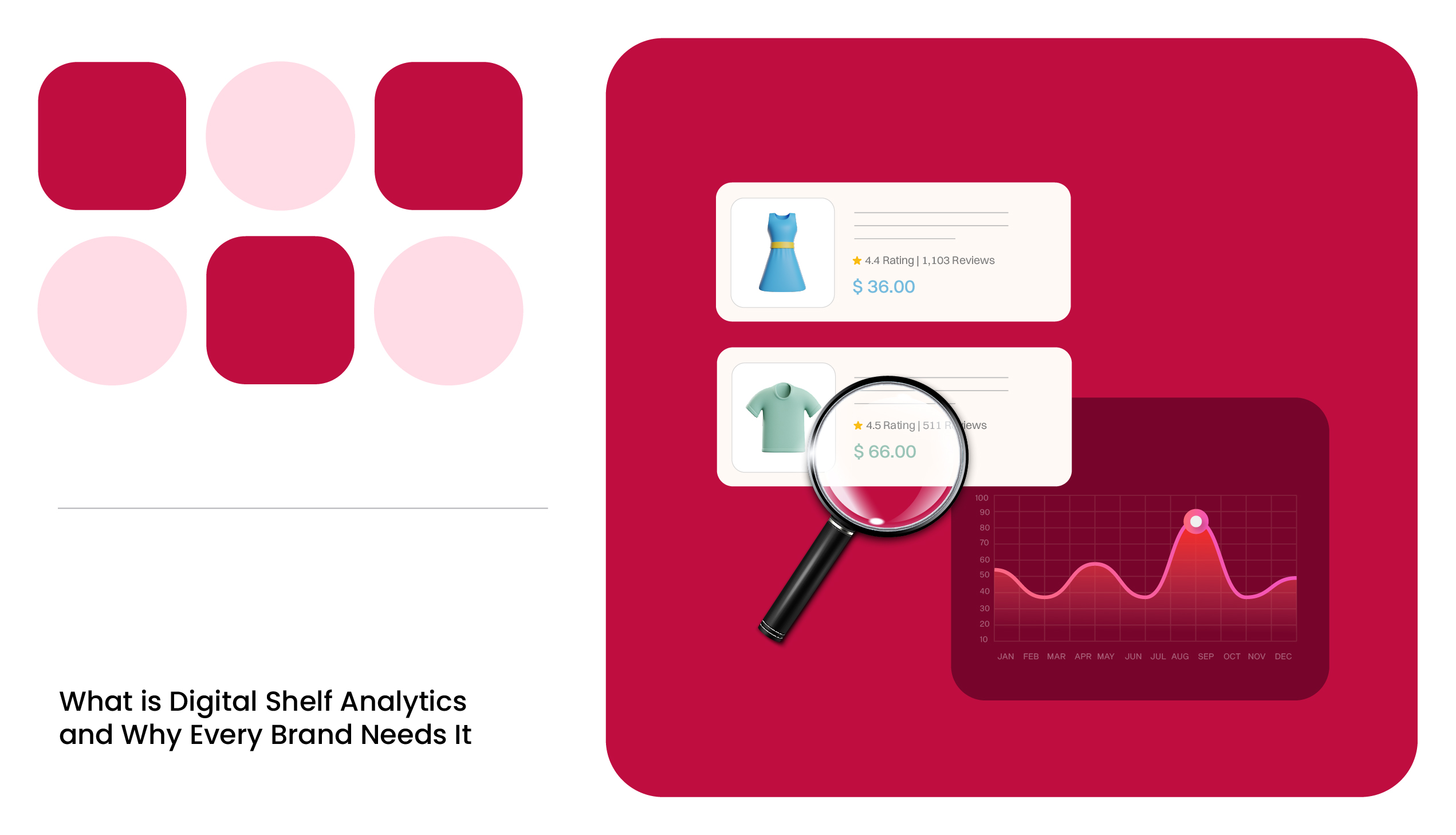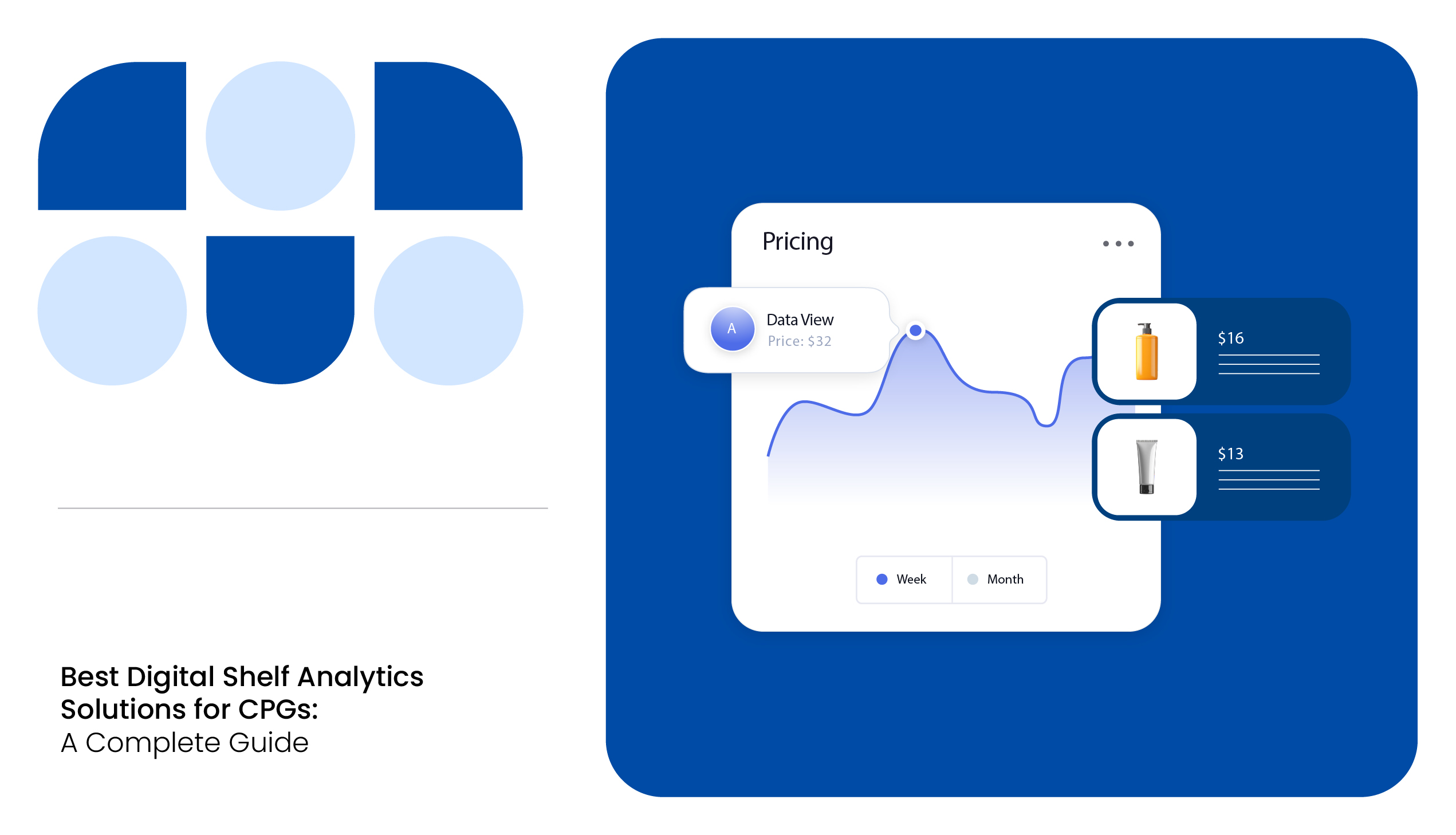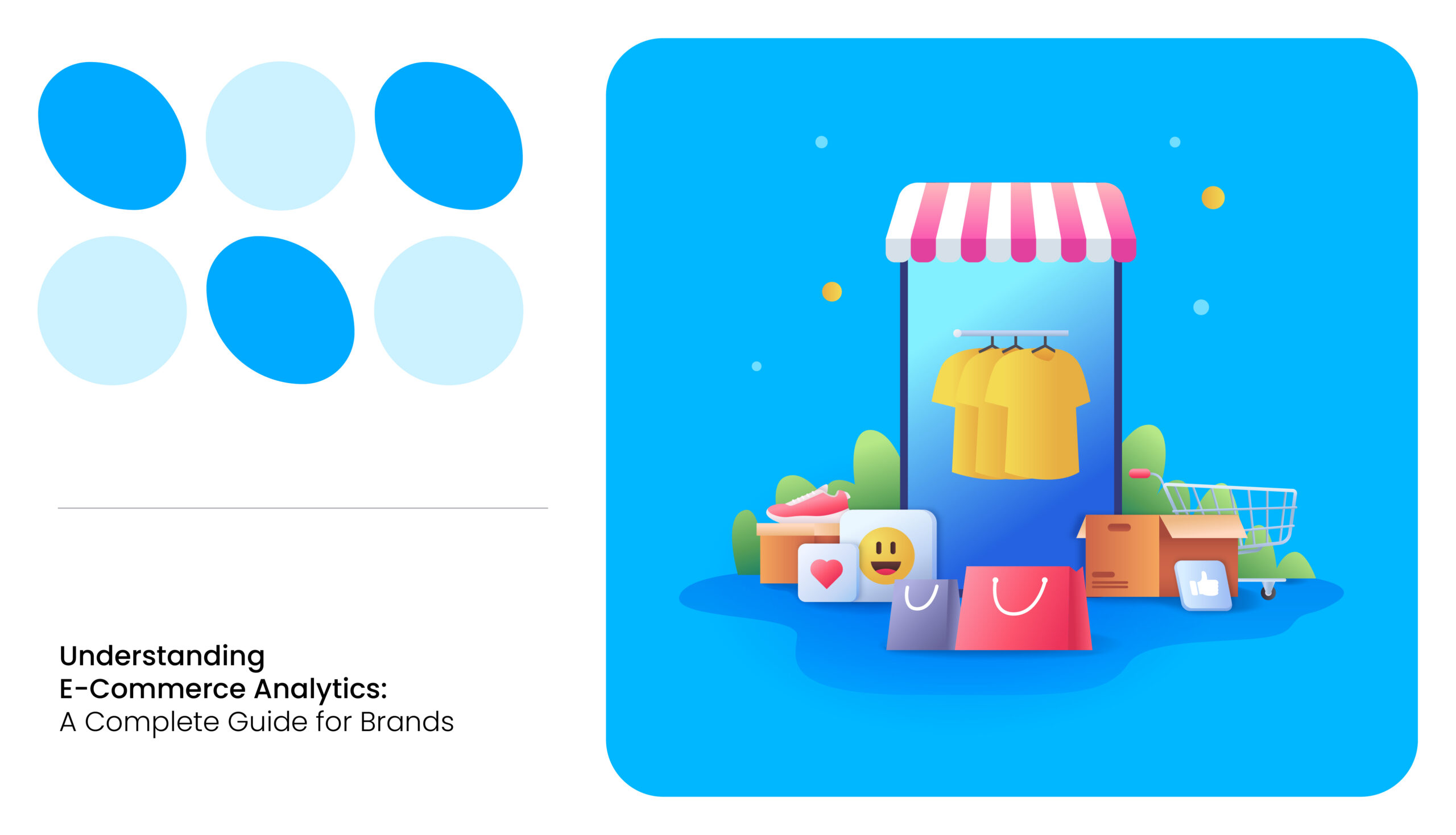E-commerce has never been more complex and more full of opportunity.
The days of “just list your products online and sales will follow” are long gone. Today, brands operate in an environment where algorithms can change overnight, new retail media formats emerge weekly, and consumers discover products in places that didn’t even exist a year ago.
The digital shelf, every place your product appears online, is now the frontline of competition. And if you don’t know how you’re showing up, you’re already at a disadvantage.
That’s where Digital Shelf Analytics (DSA) comes in. Brands need Digital Shelf Analytics (DSA) to measure, track, and optimize their online presence in real time.
But what is digital shelf analytics, and why has it become a non-negotiable for brands today? Let’s break it down.
What is Digital Shelf Analytics in 2025?
Digital Shelf Analytics refers to the systematic monitoring and analysis of how products are represented and perform across e-commerce platforms.
Similar to how CPG companies once paid for prime aisle placement or eye-level shelving in supermarkets, today’s brands must fight for search visibility, competitive pricing, compelling reviews, and consistent availability on digital storefronts.
A strong DSA system answers questions like:
- Is the product in stock, and is the right assortment offered across retailers?
- How does pricing compare across platforms, and are promotions consistent?
- Does the product appear on the first page of relevant searches?
- What do customers say, and how does sentiment trend over time?
- Are product titles, descriptions, and images consistent and accurate?
However, digital shelf intelligence is no longer about discovering insights. Brands require actionable recommendations directly from the platform to make faster business decisions.
Why Brands Need Digital Shelf Analytics
In this section, let us look at why DSA is crucial for brands:
Helps Cutting Through Data Overload
Not long ago, executives wanted more data. Dashboards were crammed with metrics, and reporting was dense. But now, they are overwhelmed with dashboards full of data but little clarity.
In Episode 30 of the Digital Shelf Insider Podcast, Rohan points out, “CXOs and brand managers now want dashboards that are noise-free and hyper-personalized to their workflows.”
In other words, success today depends on focus. Too much information overwhelms; the correct information empowers.
Digital shelf analytics filters the signal from the noise, delivering the few metrics that matter most to each role, whether it’s a CMO monitoring share of search or a brand manager tracking stockouts.
Ensures Frictionless Execution
E-commerce moves fast. Brands don’t have the luxury of waiting weeks for platforms to configure and deliver insights. “The expectation is that when you sign up, it works from day one,” says Rohan.
A robust DSA platform like MetricsCart will be plug-and-play, offering immediate visibility and insights without drawn-out setup processes. That’s especially critical for CPG players with thousands of SKUs, or for high-ticket brands where each SKU represents a significant portion of revenue.
Meets Changing Customer Search Journeys
One of the significant changes in e-commerce and the customer search processes is how AI has reshaped product discovery.
Traditionally, if you wanted to buy a laptop under $1,000, you’d Google it and read a review article or listicle. Today, generative AI tools like Google Gemini or ChatGPT surface product recommendations directly, with links to marketplaces.
This means the share of search is more critical than ever. In episode 30 of the Digital Shelf Insider podcast, Rohan discusses the importance of optimizing product descriptions for AI across e-commerce platforms.

In episode 30 of the Digital Shelf Insider podcast, Rohan discusses the importance of optimizing product descriptions for AI across e-commerce platforms. Watch full episode here:
If you’re not present where AI looks, you’re invisible to the shopper. Therefore, brands must be visible wherever AI pulls product information from.
READ MORE | Curious About How A Customer Completes Their Buying Process? Check out Optimizing Consumer Buying Process: What Every E-Commerce Brand Needs to Know
Identifies The Untapped Power of Reviews
Every brand knows reviews matter. However, few realize the intelligence they possess. Reviews aren’t just social proof; they’re data points for:
- Pricing sensitivity (“Too expensive for the size”)
- Supply chain problems (“Arrived late, packaging damaged”)
- Product design flaws (“Bottle cap leaks”)
- Marketing effectiveness (“Didn’t live up to the ad”)
- Emerging trends (e.g., matcha becoming a global craze)
“Reviews are underrated,” says Rohan. “They’re an incredibly powerful source of customer feedback. You can generate marketing content, spot design issues, measure campaign impact, and even detect supply chain problems.”
In beauty and personal care, review mining has become a shortcut to R&D. Instead of conducting lengthy focus groups, brands can gauge sentiment shifts in real-time. DSA platforms make these insights visible at scale, turning customer voices into strategic intelligence.
Key Challenges Digital Shelf Analytics Solves
Data Accuracy vs. Perception
Retailer websites update constantly. Prices shift hourly during promotions. Brands often question the accuracy of DSA when their manual checks don’t match.
Rohan explains: “It’s not wrong data. It’s dynamic pricing. We always keep evidence: screenshots, cached HTML. But when a brand checks hours later, the retailer may have already updated the price.”
This distinction is vital: the challenge isn’t insufficient data, but interpreting fast-moving data correctly.
Incomplete Data Risks
Retailers frequently tweak their website structures, sometimes even daily. A slight change in HTML or a redesigned PDP can break data scraping scripts.
When this happens, brands may unknowingly work with partial or missing datasets, which can skew insights and misinform decisions.
It’s not just about collecting data; it’s about making sure you’re always collecting the right data. That means 24/7 monitoring, instant alerts when something breaks, and rapid deployment of fixes.
Robust Digital Shelf Analytics platforms invest heavily in redundancy, including multiple collection pipelines, automated error detection, and proactive monitoring. This ensures brands don’t wake up to dashboards that look complete but are quietly missing 30% of the story.
Stock Volatility in Quick Commerce
Quick commerce adds a new dimension of complexity. In dark stores, inventory refreshes can happen multiple times a day. What’s in stock at 10 AM may be gone by noon, only to reappear later in the evening.
If you’re not monitoring at the zip-code level, you’re not seeing reality. Quick commerce is hyperlocal; your product could be in stock in one neighborhood but invisible in another just a mile away.
For brands, this volatility affects availability scores, share of shelf, and even retail media performance. Ads can continue to run in areas where products are out of stock, wasting budgets.
DSA platforms that capture this granularity help brands redirect spend and optimize inventory placement in near real-time.
Content Gaps
Conversion depends on content quality. Broken images, missing bullet points, or outdated specs can silently kill sales, even for well-priced products. According to industry research, over 30% of shoppers will abandon a purchase if the product detail page looks incomplete or inaccurate.
DSA platforms flag these issues instantly, whether it’s a missing hero image on Amazon or an incorrect pack size listed on Instacart.
More importantly, they enable brands to track content compliance against their internal standards, ensuring that product descriptions, nutrition labels, and certifications (such as “gluten-free” or “organic”) are consistent across all retailers.
Platform Complexity
Each e-commerce platform comes with its own set of rules. Amazon enforces strict listing requirements and suppresses products with incomplete attributes. Walmart surfaces different content modules depending on the category. Instacart personalizes visibility at the zip-code level.
For brands selling across 5, 10, or even 20 platforms, maintaining consistency is nearly impossible without automation. DSA acts as a centralized system of record, surfacing discrepancies in real time and helping teams standardize their approach.
Competitive Benchmarking
Competition in e-commerce has intensified. Price wars, aggressive promotions, and a surge in retail media investments have made it crucial for brands to know exactly how they compare to their rivals.
DSA provides that competitive lens. Brands can benchmark pricing trends, promo frequency, content quality, and even share of search visibility.
This intelligence can shape go-to-market decisions, inform retail negotiations, and help identify where competitors are gaining ground.
Rohan highlights: “Benchmarking is really important for a tool like this because when you look at a metric, unless you compare it to something else, you can’t really know if it’s good or bad.
For brands, DSA shifts the focus from reactive reporting to proactive strategy. It enables them to respond to competitive moves in real-time, rather than weeks later.

The Road Ahead: Future of Digital Shelf Analytics
Where is digital shelf analytics headed next?
- Natural Language Queries: Imagine typing, “Why did sentiment dip last month?” and receiving an AI-generated analysis with supporting data. That’s the next frontier. MetricsCart digital shelf analytics software offers advanced LLM chat support for customers.
- CXO-Level Reporting: Simplified executive dashboards that surface only the most strategic insights.
- Quick Commerce Integration: Addressing three challenges: lack of seller-facing platforms, hyperlocal granularity, and extreme stock volatility.
- Advanced Review Analytics: Moving beyond star ratings to detect competitor mentions, sentiment by region, and predictive demand signals.
- Retail Media Integration: A unified view that connects ad spend, share of search, and content performance.
READ MORE | Confused About Choosing a Digital Shelf Analytics Vendor? Dive into How To Pick the Best Digital Shelf Analytics Vendor in 2025
Winning on the Digital Shelf: Next Moves for Brands
The digital shelf is the battleground of modern commerce. In a world where AI shapes discovery, stockouts erode loyalty, and reviews serve as R&D, brands cannot afford to operate blindly.
Digital Shelf Analytics tools like MetricsCart is no longer optional; it’s the foundation of competitive advantage.

The brands that win will be those that:
- Cut through data noise with relevant insights.
- Monitor share of search and reviews relentlessly.
- Balance scale with granularity, depending on category.
- Partner with providers who deliver both robust infrastructure and lightning-fast service.
As e-commerce enters its next chapter, digital shelf analytics isn’t just about measuring performance. It’s about enabling smarter decisions, faster.
Want to Win on the Digital Shelf?
FAQs
Customer journeys are shifting with AI-driven search tools like Google Gemini and ChatGPT. Brands that don’t optimize their digital shelf risk being invisible. DSA ensures products are discoverable, accurately represented, and competitively positioned across platforms.
Reviews are a goldmine of insights. Through DSA, brands can analyze reviews for product feedback, supply chain issues, pricing sensitivity, and even emerging trends. This helps improve products, campaigns, and customer experience.
DSA helps brands deal with dynamic pricing, incomplete or inconsistent data, stockouts, and benchmarking against competitors. It ensures accuracy, reduces guesswork, and provides actionable insights.
A strong partner combines robust infrastructure with responsive service. On the product side, that means reliable, scalable systems that can handle both FMCG and niche high-ticket brands. On the service side, it means speed, transparency, and flexibility — implementing feedback quickly and building trust.
FMCG brands use DSA to manage scale: thousands of SKUs, retailer coverage, and global consistency. High-ticket brands use it for depth: detailed SKU-level insights, competitive benchmarking, and fast customizations to protect high-value sales.







